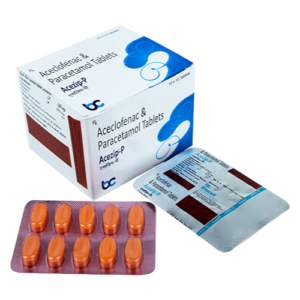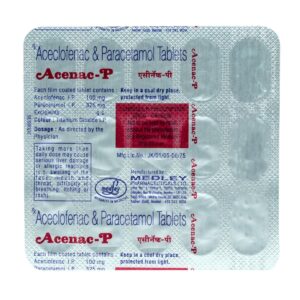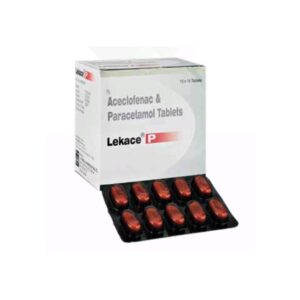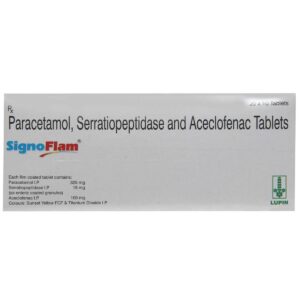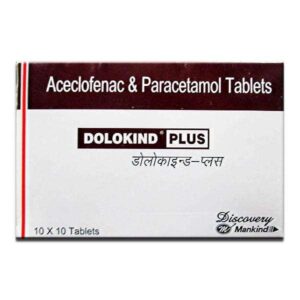ACECLOFENAC + PARACETAMOL
Aceclofenac: Aceclofenac is a non-steroidal anti-inflammatory drug (NSAID) that is commonly used to relieve pain and reduce inflammation in conditions such as osteoarthritis, rheumatoid arthritis, and ankylosing spondylitis. It belongs to the class of drugs known as selective COX-2 inhibitors.
The mechanism of action of Aceclofenac involves inhibiting the synthesis of prostaglandins, which are chemicals involved in pain and inflammation. By blocking the action of the enzyme cyclooxygenase (COX), Aceclofenac reduces the production of these prostaglandins, thereby providing pain relief and reducing inflammation.
The usual recommended dose of Aceclofenac is 100 to 200 mg per day, taken orally in divided doses. It is usually taken with or after food to minimize gastrointestinal side effects.
Like other NSAIDs, Aceclofenac may cause certain side effects. Common side effects include gastrointestinal disturbances such as stomach pain, indigestion, nausea, and diarrhea. In some cases, it may also cause dizziness, headache, rash, and edema. Long-term use of Aceclofenac may increase the risk of cardiovascular events such as heart attack and stroke.
It is important to note that Aceclofenac should be used with caution in patients with a history of gastrointestinal ulcers, liver or kidney disease, and in elderly or debilitated patients. It is not recommended for use in pregnant women or breastfeeding mothers.
As with any medication, it is advisable to consult a healthcare professional before starting or altering the dose of Aceclofenac. They will be able to provide personalized advice based on the individual’s medical history and other medications they may be taking.
Paracetamol: Paracetamol, also known as acetaminophen, is a commonly used medication for reducing pain and fever. It belongs to the class of drugs known as analgesics and antipyretics. Paracetamol works by inhibiting the production of certain chemicals in the brain that are responsible for transmitting pain signals and regulating body temperature.
Paracetamol is widely used for the relief of mild to moderate pain, such as headaches, toothaches, muscle aches, backaches, and menstrual cramps. It is also commonly used to reduce fever associated with various conditions, including colds, flu, and other infections.
The usual recommended dose of paracetamol for adults is 325-650 milligrams every 4 to 6 hours, up to a maximum of 4000 milligrams per day. However, it is essential to follow the specific dosing instructions provided by your healthcare professional or as mentioned on the packaging.
While paracetamol is considered safe when taken appropriately, it can have side effects. These may include rare allergic reactions such as skin rash, itching, swelling, and breathing difficulties. In some cases, excessive doses or prolonged use of paracetamol can cause liver damage or liver failure, especially in individuals with pre-existing liver conditions or those who consume alcohol regularly. It is important not to exceed the recommended dose or take paracetamol for an extended period without consulting a healthcare professional.
In summary, paracetamol is a widely used medication for pain relief and fever reduction. It works by inhibiting the production of certain chemicals in the brain. While it is generally safe when used appropriately, it is essential to take it according to the recommended dose and duration to minimize the risk of side effects, particularly liver damage.


